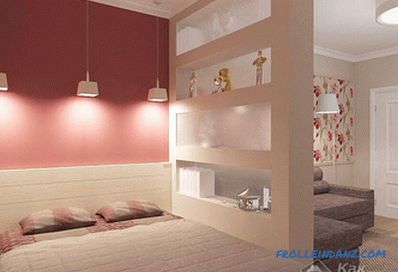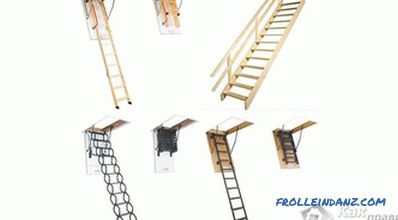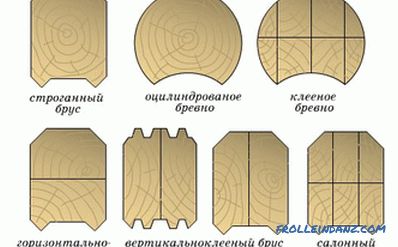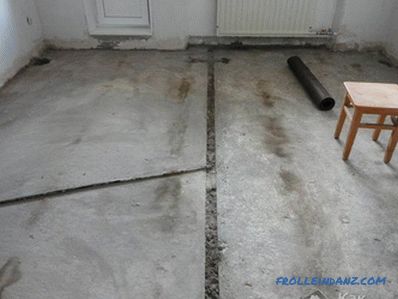Today in the construction of houses is widely used modern insulation material - ecowool. The disadvantages of eco-wool for many years considered the leading experts of this profile. Not all positively relate to the quality of ecowool as a warming material. That is why, before using this insulating material, it is necessary to carefully consider its main characteristics and properties.
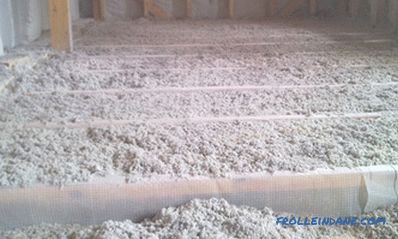
The composition of ecowool insulation and its basic properties
The main components in the production of ecowool are:
# 1. Waste materials of the paper and cardboard industry, which include:
- - residues in the manufacture of corrugated packaging;
- - defective products that appear during the production of printed publications;
- - the majority of waste and defective parts for the production of raw cardboard products.
# 2. Waste paper type or paper type, which has a lower quality of raw materials, due to increased susceptibility to contamination. As well as the presence of heterogeneity and diversity of the material.
The total composition of ecowool:
- within 80% consists of recycled cellulose;
- 12% is boric acid, which has a special antiseptic property aimed at protecting from exposure to fungal microorganisms and preventing the development of bacteria;
- sodium tetraborate makes up no more than 8% of the total mass of the material and is a strong flame retardant with insecticidal properties. The main objective of which is to reduce the level of flammability and flammability.
Recently, ecowool has been widely used in the construction of various structures - for insulating residential premises, warehouses, commercial premises and non-residential public buildings. The most optimal use of this insulation material in rooms with high humidity levels, where condensate can occur quite often.
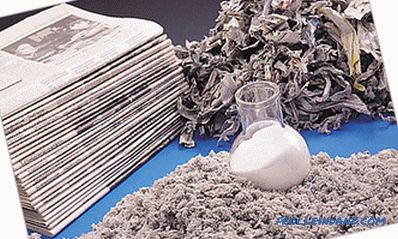
Components used in the manufacture of ecowool.
Disadvantages of ecowool
Unfortunately, today it is not possible to find building materials on the markets with the absence of any negative qualities. Many of them have features that look like a disadvantage when viewed from the point of view of direct use for certain purposes. The disadvantages of ecowool are as follows:
- 1. It has good thermal insulation properties, but after some time they significantly decrease and increase thermal conductivity, which is directly influenced by certain factors:
- during operation, ecowool is significantly reduced in volume - within 20% of the total mass. In order to avoid material subsidence, many experts advise laying insulation with a slight excess of 20–25%, which will completely cover the reduced volume of eco wool in the future.
- ecowool absorbs a sufficiently large amount of moisture - ranging from 9 to 15%, where within one year one percent of moisture is collected. With each increase in humidity by one percent, the level of thermal conductivity increases from one to two and a half percent. Therefore, the layer of insulation should be ventilated and be able to give this moisture into the atmosphere.
- 2. For ecowool installation, it is necessary to have special equipment - modern professional pneumatic inflatable devices that install ecowool with high quality. This equipment helps to adhere to certain standards in density and produces a uniform volume of injection, in order to prevent shrinkage of the insulation in the future.
- 3. In order to avoid a decrease in the level of thermal insulation of a room, the proper installation requires the help of highly qualified specialists who have good experience in working with eco-wool. It should be noted that it is ecowool that is rather picky for the professional skills of the person who installs it.
- 4. It is important to know that when carrying out a dry type of installation, ecowool forms dust, and using a wet method of application dries out for a long time. Depending on the presence of atmospheric conditions at the construction site and the thickness of the layer of material deposition, the ecowool will dry in the range from 48 to 72 hours, and in some cases even longer. This is a big disadvantage in installation installation, since often the time spent on repair work is allocated much less.
But it is the wet method of laying that gives a better result due to the uniform compaction of the ecowool, which ensures a high level of sound and heat insulation of the building.
- 5. If you compare ecowool with polystyrene foam plates, its stiffness is much lower, which makes it impossible to use this material for frameless self-insulation during installation of floor screeds.
- 6. In the event that work was carried out to insulate structures of a vertical type with a density below the norm, which is 65 kilograms per square meter, there may be a risk of shrinkage with the presence of non-insulated cavities.
- 7. Experts strongly discourage the use of ecowool at close range to open fire sources, chimneys and chimneys. The effect of high temperature on the insulating material may lead to its gradual decay. For additional protection of ecowool, it is necessary to adapt special fences made of asbestos cement slabs and basalt fire-resistant mats with the presence of a foil-coated surface that reflects heat.
It has also long been necessary to protect glass wool and mineral wool from direct sources of fire-hazardous structures with the help of special non-flammable and non-combustible materials.
Video: Ecowool test for burning and sound insulation
The main positive characteristics of ecowool
+ 1. High level of sound insulation - with a layer thickness of fifteen millimeters absorbs up to 9 dB. sound. That is why this material is in great demand as the maximum sound insulation of airports, music studios and stadiums.
+ 2. A small amount of ecowool is required for room insulation, with a calculation from 28 to 65 kilograms per cubic meter.
+ 3. Does not contain toxic and toxic substances. But before using this insulation material, you need to ask the manufacturer about what kind of fire retardant was used in its production. The highest quality is considered to be borax or borax, and the presence of ammonium sulfate with boric acid can cause a strong unpleasant odor. As a rule, insulation with such a composition rather quickly loses its fire-fighting properties.
+ 4. Ecowool is quite easily blown into the most inaccessible places.
+ 5. It is a fairly convenient seamless material, which allows considerable savings in heating time during the winter period.
+ 6. Affordable cost of the product with high quality.
+ 7. Does not contain substances harmful to humans that cause allergic diseases or diseases of the skin.
Video: Technical specifications of ecowool and methods of its application
